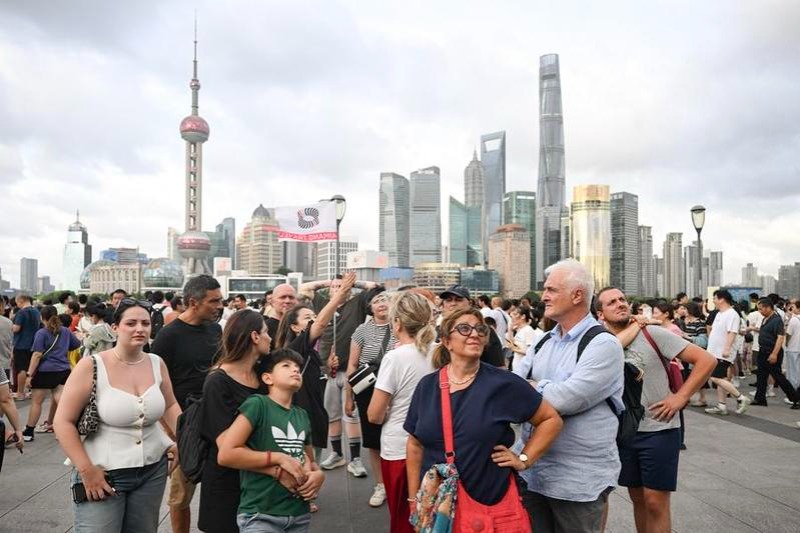Key component


China is becoming more deeply integrated into the global economic system
China has been a major beneficiary of globalization, which has driven rapid growth of the global economy.
China plays an important role in the global market and a leading role in the Asia-Pacific region. In the globalization process, China has learned technologies and management approaches from other countries and benefited from the international market, becoming a leading manufacturer and exporter of electric and optical equipment with technological content. However, it is still at the low end of international production chains and relies on the manufacturing of low value-added goods, which only addresses the employment of low-skilled workers.
Despite the impacts of China-US trade frictions and geopolitical tensions as well as the novel coronavirus outbreak on China's global industrial, supply and value chains, it is still turning into the world's largest consumer market, which will greatly improve its role in the global trading system and reshape global supply chains, especially those in the Asia-Pacific region.
China is facing and will continue to see new opportunities and challenges. The first challenge lies in the mismatch of economic growth and people's incomes. While the per capita income in the United States has steadily increased over the past 40 years, more wealth has flown to the wealthiest 1 percent of US residents and the income of the poorest 50 percent of the population continues to decline, which is widening the already huge income gap in the country. Facing a similar scenario, China has been focusing on addressing income inequality.
Labor forces in China and developed Western countries face rising competition. Economic globalization has enabled Western multinationals to expand their businesses to China, Southeast Asia and other emerging economies. The industrial transfer and outsourcing of products and services of the developed economies have generated competition between workers in developing and developed countries.
Other developing countries such as India, Mexico and Southeast Asian nations have increasingly become China's main competitors in the global market, especially for the manufacturing of goods for Western consumer markets. The countries with abundant labor resources are embracing transferred low-end industries from other countries, including China.
China is participating in competition with Western developed countries in the global market. Although its overall technological level still lags behind that of developed countries, China has shown strong competitiveness in some fields. The competition between China and Japan in infrastructure construction in Southeast Asia, especially high-speed railways, has become increasingly fierce.
China-US economic and trade frictions and geopolitical conflicts have exerted adverse impacts. Over the past four years, the Trump administration imposed additional tariffs on China, resulting in the US which used to be China's largest trading partner becoming its third-largest, and hampering the interests of both sides. The Trump administration restricted investment by Chinese companies in the US, especially in high-tech fields, as well as proposed mergers and acquisitions. It also encouraged foreign enterprises to move out of China, exerting pressure on China's global industrial and supply chains.
Looking to the future, opportunities remain as Western multinationals will not abandon the Chinese market. Gregory Gilligan, chairman of the US Chamber of Commerce in China, said in a recent interview that 70 percent of nearly 1,000 US companies surveyed by the chamber had no plans to move out of the Chinese market, suggesting that business remains a key anchor for US-China relations. According to the report, European Business in China: Business Confidence Survey 2020, released by the European Union Chamber of Commerce in China, only 11 percent of surveyed EU companies were considering shifting their industrial chains away from China or changing investment plans, a 10-year low.
For a long time, the research and development of advanced semiconductor technologies in Western countries has been backed up by China's large demand. US sanctions on chip exports to China have allowed other countries to enter the Chinese market and occupy a large share, such as Germany with its chip giant Infineon. According to the report Understanding US-China Decoupling, recently released by the US Chamber of Commerce, decoupling would lead to the US semiconductor industry losing $83 billion of revenue and shedding 124,000 jobs.
Wall Street financial institutions also expect China to open up its market to large-scale investment in the country. In August 2020, US-based Black Rock became the first wholly foreign-owned mutual fund company in China and Vanguard moved its Asian headquarters to Shanghai. In December, Goldman Sachs acquired Goldman Sachs Gao Hua Securities Co to became the first foreign-funded bank with full ownership in China.
China's position in the global industrial and supply chains cannot be replaced due to its huge market demand, large labor force, other low-cost factors, industrial systems, infrastructure and business environment. Its status as the world's largest consumer market is a major advantage compared with other Asian countries.
Against the impacts of the COVID-19 pandemic, China took the lead in resuming production and saw the growth rate of its foreign trade topping the world.
Last year, the Regional Comprehensive Economic Partnership agreement was signed, creating a market covering 2.3 billion people. Negotiations were concluded for the China-EU Comprehensive Agreement on Investment, which covers more than 1.8 billion people. Having signed a free trade agreement with China in 2009, the Association of Southeast Asian Nations became China's largest trading partner last year. The agreements show that China is becoming ever more deeply integrated into the global economic system.
The author is an academician of the World Academy of Sciences for the advancement of science in developing countries and a special-term professor of economics at the University of Chinese Academy of Sciences. The author contributed this article to China Watch, a think tank powered by China Daily. The views do not necessarily reflect those of China Daily.


































